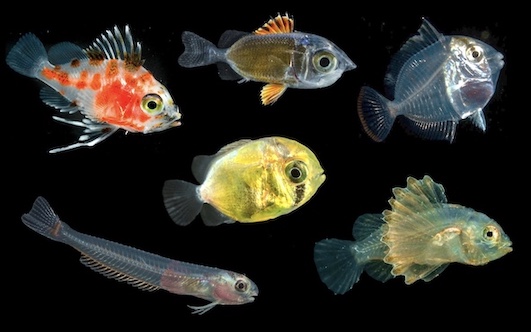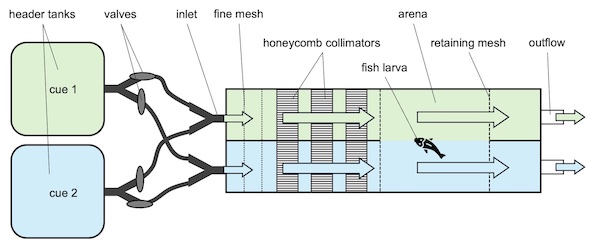ChemTrail – Sensory enrichment to augment fish community development on degraded coral reefs
This project is funded by the German Research Foundation (Deutsche Forschungsgesellschaft – DFG) and seeks to harness natural processes in sensory ecology to supplement recovery and resilience in coral reef ecosystems.
Coral reefs worldwide are being degraded at unprecedented rates through anthropogenic impacts. To save these important ecosystems, decision makers are increasingly turning towards coral restoration. However, current restoration approaches are costly and limited in scale. This project aims to use chemosensory enrichment to enhance the development of coral reef fish communities at degraded reefs. Fishes perform a range of functional roles on the reef that are vital for habitat recovery and resilience. Local abundance of fishes is governed by recruitment of pelagic larvae that use olfactory cues emitted by the reef community to navigate towards settlement habitat. However, degraded reefs smell less favourable than healthy reefs and therefore receive less recruitment. This feedback-loop hampers reef recovery. By mimicking the chemosensory signal of a healthy reef habitat, we can attract fish (and potentially coral) larvae to degraded reefs or restoration sites, thereby enhancing natural reef recovery.

Fig 1: Fish larvae
Specifically, we aim to:
(1) Assess the chemosensory signature of natural reef communities.
Water from coral reefs in different health states (from healthy to degraded) will be analyzed for Biogenic Volatile Organic Compounds (BVOCs) and Dissolved Organic Matter (DOM) using in situ sorptive extraction and water sample analyses.
In collaboration with Dr. Gonzalo Gomez-Saez from LMU and Prof. Sergio Rasmann from the University of Neuchâtel, Switzerland.
(2) Test which (mixes of) natural reef compounds are most attractive to fish larvae.
We will use behavioral observations in choice flumes to assess the potential of specific target compounds, identified on step one, to attract fish and invertebrate larvae. During these experiments, individual larvae can freely choose between two non-overlapping streams of water carrying different chemosensory signals.
(3) Develop a method to achieve sustained release of the relevant compounds in situ.
We will test a hybrid biomaterial that releases the focal settlement cues via a nanoparticle–biopolymer delivery system. The material is called SNAP-X and was developed by the Coral Reef Ecophysiology and Engineering Lab at Scripps Institution of Oceanography in California to enhance coral settlement. We aim to adapt the approach for reef fishes.
In collaboration with Dr. Daniel Wangpraseurt from Scripps, USA.
(4) Test and refine chemosensory enrichment to enhance fish recruitment in field experiments.
The final step will be to test the developed approach in the field. Fish recruitment will be monitored over four weeks on small artificial patch reefs, some of which are treated with the newly developed SNAP-X (treatment) and some of which are not (control).

Fig 2: Schematic experimental setup
Steps 1 (water sampling), 2 (behavioural experiments), and 4 (field experiments) are implemented in the Maldives in collaboration with the Anantara Dhigu Resort.
In the long run, we aim to establish this approach as a cheap and effective new tool to support coral reef restoration worldwide.

